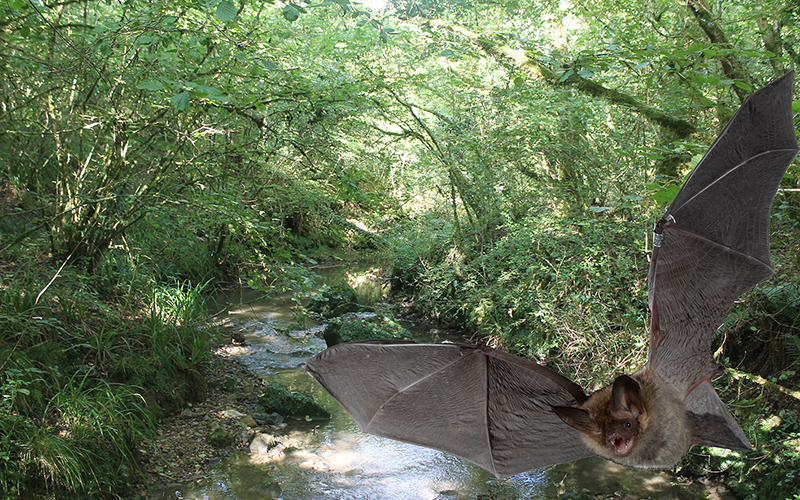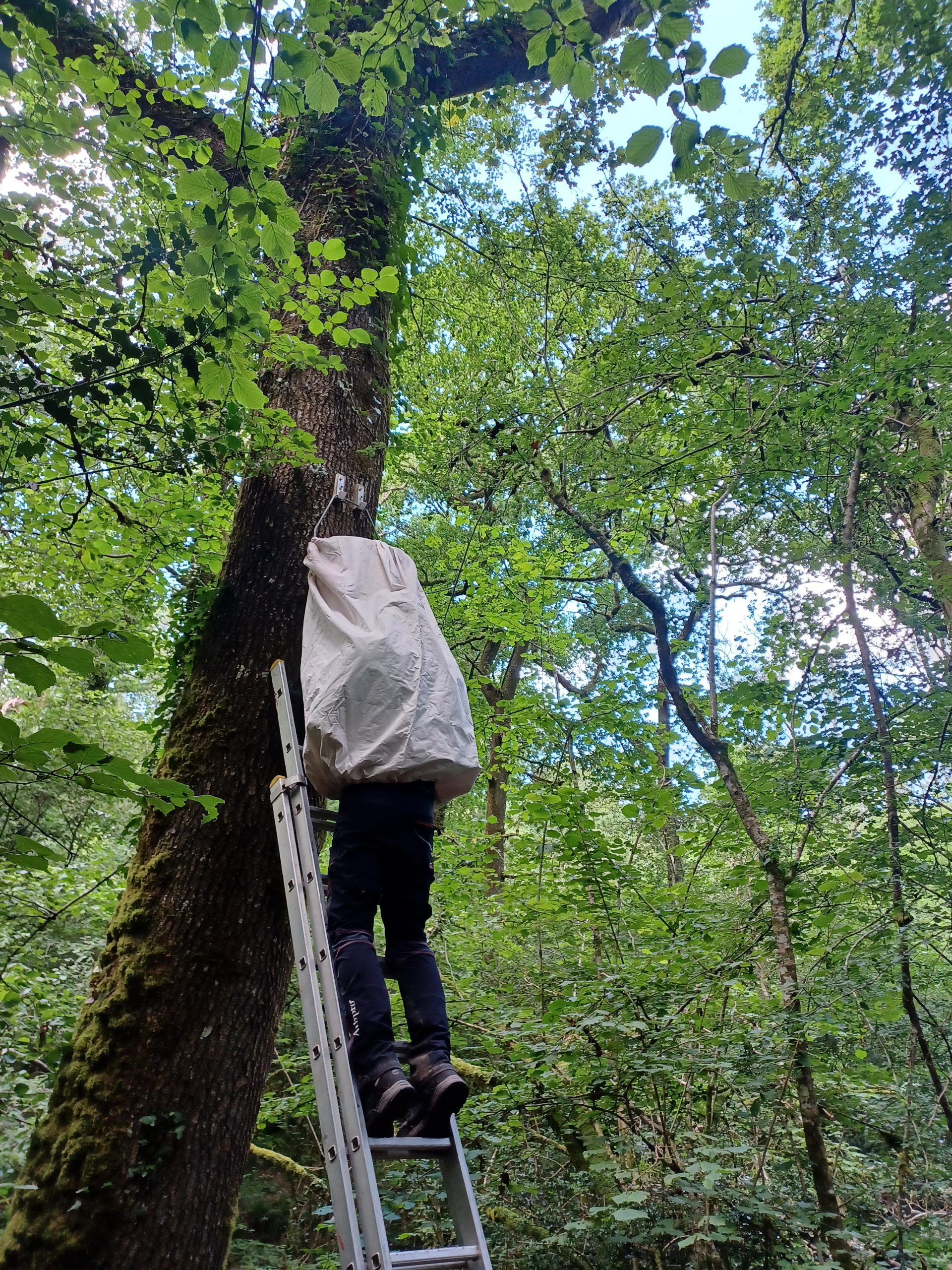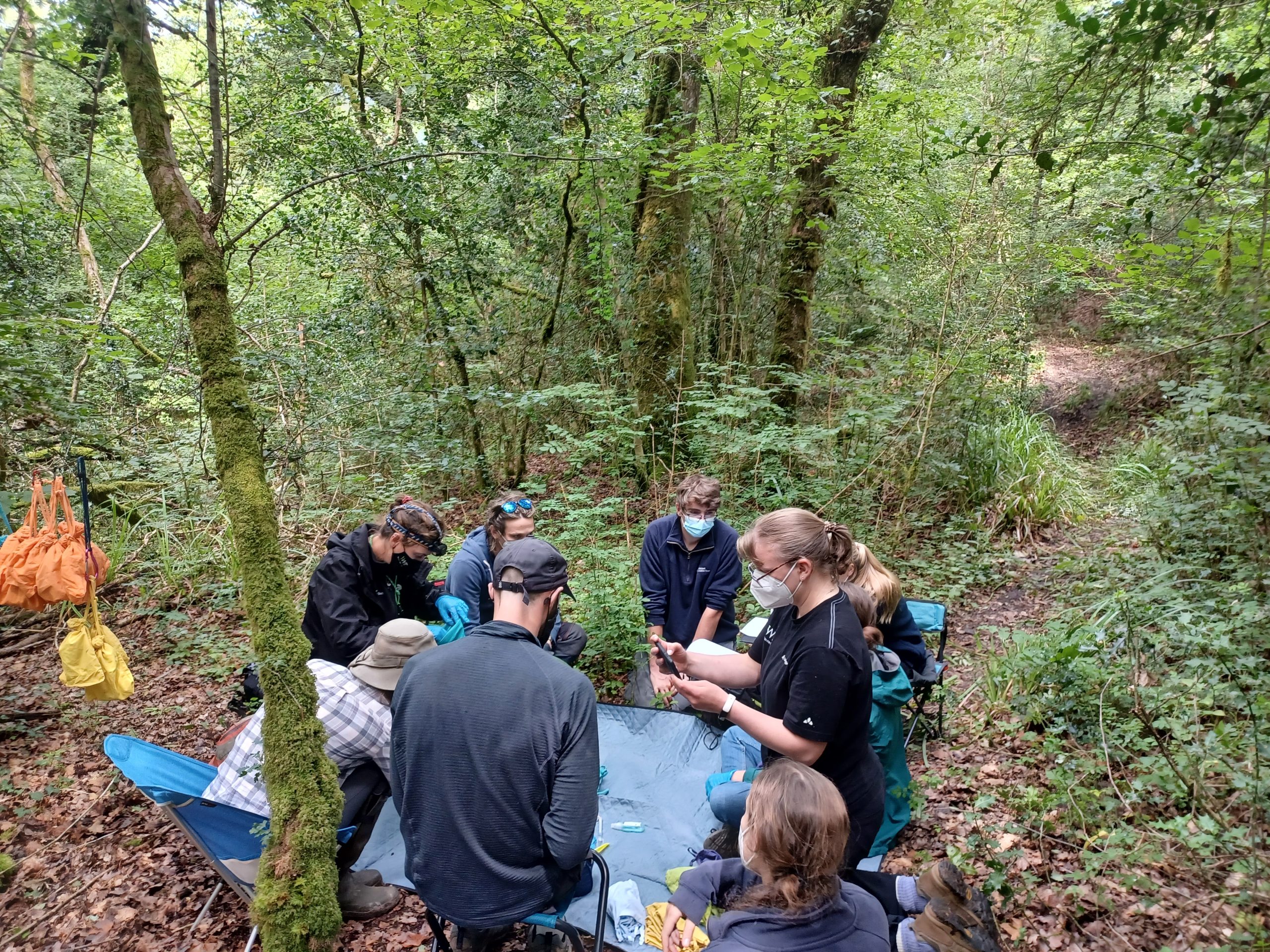
Ben Atkinson, North Dorset Reserves Warden for Dorset Wildlife Trust, explains why Bracketts Coppice Nature Reserve is so special for Bechstein’s bats.
Tucked away down the country lanes of northwest Dorset, the 46 hectares of Bracketts Coppice contains ancient woodland, streams, wood pasture and hay meadows. The reserve is a designated Special Area of Conservation (SAC) and a Site of Special Scientific Interest (SSSI). There are rare species like marsh fritillary butterflies and hazel dormouse but it’s the presence of a large population of Bechstein’s bats that is one of the main reasons for the reserve’s SAC status.
Dorset Wildlife Trust has been involved in the management of Bracketts Coppice for more than 40 years, gradually acquiring more blocks of land over the years as and when they became available.
In 1998, Dorset Bat Group discovered a nursery colony of Bechstein’s bats using one of the 30 bat boxes they had installed. The following year, Vincent Wildlife Trust (VWT) installed a further 50 Schwegler 2FN bat boxes and four Schwegler 1FW (hibernation) boxes. The boxes have been monitored every year since, with Bechstein’s being ringed and processed. This has given us nearly 25 years of data on this colony and allowed the researchers at VWT to understand the population dynamics of this rare and elusive species. Some of the bats are now well accustomed to this with the oldest ringed bat being 18 years old.
The presence of Bechstein’s bat means we manage the main woodland areas sympathetically to their needs. The bats prefer a ‘cluttered environment’ with lots of understorey, dead trees and branches with holes that they use for roosting, breeding and hibernating. A light touch is needed to manage the habitat and we encourage the dense understorey by occasionally coppicing small areas to let in light and allow plants and small shrubs to grow. We have earmarked some of the larger oak trees to become veteran trees while other trees are ring barked (removing bark from the base of the trunk to kill the tree) to provide more standing deadwood and potential roosting sites.

Checking boxes for Bechstein’s bats at Bracketts Coppice ©Ben Atkinson
Since becoming the warden for Bracketts Coppice in 2019, I have been lucky enough to help with the monitoring on several occasions, helping to check boxes and carry equipment across the often-difficult terrain. With over 80 boxes to check, it is a long day but always enjoyable and rewarding.
I have learnt a great deal from joining these monitoring days. Seeing not only Bechstein’s but noctules, brown long-eared, natterer’s and pipistrelle bats up close and watching the staff and volunteers process and ring the Bechstein’s has been incredible.

Collecting data on Bechstein’s bats at Bracketts Coppice ©Ben Atkinson
The Bechstein’s bat monitoring at Bracketts is a real success story of partnership working. It has provided valuable insights into the ecology of this rare bat species and allowed greater understanding by both the ecologists and the wardens who manage the reserve. So a huge thanks to all the staff and volunteers from VWT, past and present, for all their hard work over the years.
Vincent Wildlife Trust works in partnership with Dorset Wildlife Trust to monitor the population of Bechstein’s bats that call Bracketts Coppice their home.
Banner photo: Bracketts Coppice ©Ben Atkinson; Bechstein’s bat ©Daniel Hargreaves